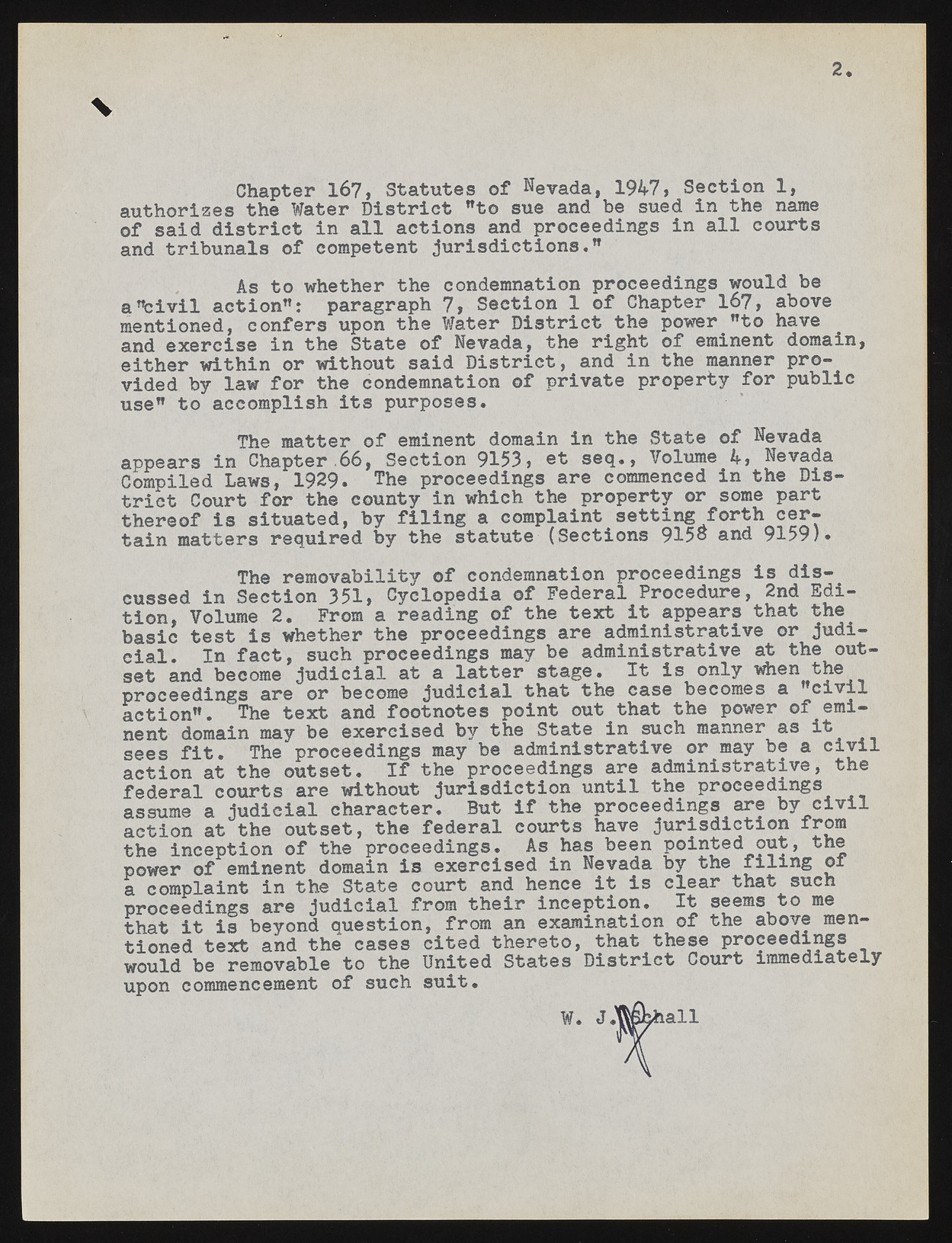Copyright & Fair-use Agreement
UNLV Special Collections provides copies of materials to facilitate private study, scholarship, or research. Material not in the public domain may be used according to fair use of copyrighted materials as defined by copyright law. Please cite us.
Please note that UNLV may not own the copyright to these materials and cannot provide permission to publish or distribute materials when UNLV is not the copyright holder. The user is solely responsible for determining the copyright status of materials and obtaining permission to use material from the copyright holder and for determining whether any permissions relating to any other rights are necessary for the intended use, and for obtaining all required permissions beyond that allowed by fair use.
Read more about our reproduction and use policy.
I agree.Information
Digital ID
Permalink
Details
More Info
Rights
Digital Provenance
Publisher
Transcription
2. Chapter 167, Statutes of Nevada, 1947, Section 1, authorizes the Water District nto sue and be sued in the name of said district in all actions and proceedings in all courts and tribunals of competent jurisdictions.” a ”fcivil action”: paragraph 7, Section 1 of Chapter 167, above mentioned, confers upon the Water District the poorer ”to have and exercise in the State of Nevada, the right of eminent domain, either within or without said District, and in the manner provided by law for the condemnation of private property for public use” to accomplish its purposes. The matter of eminent domain in the State of Nevada appears in Chapter.66, Section 9153, et seq., Volume 4, Nevada Compiled Laws, 1929. The proceedings are commenced in the District Court for the county in which the property or some part thereof is situated, by filing a complaint setting forth certain matters required by the statute (Sections 915© and 9159). cussed in Section 351, Cyclopedia of Federal Procedure, 2nd Edition, Volume 2. From a reading of the text it appears that the basic test is whether the proceedings are administrative or judicial. In fact, such proceedings may be administrative at the outset and become judicial at a latter stage. It is only when the proceedings are or become judicial that the case becomes a civil action”. The text and footnotes point out that the power of eminent domain may be exercised by the State in such manner as it sees fit. The proceedings may be administrative or may be a civil action at the outset. If the proceedings are administrative, the federal courts are without jurisdiction until the proceedings assume a judicial character. But if the proceedings are by civil action at the outset, the federal courts have jurisdiction from the inception of the proceedings. As has been pointed out, the power of eminent domain is exercised in Nevada by the filing or a complaint in the State court and hence it is clear that such proceedings are judicial from their inception. It seems to me that it is beyond question, from an examination of the above mentioned text and the cases cited thereto, that these proceedings would be removable to the United States District Court immediately upon commencement of such suit. As to whether the condemnation proceedings would be The removability of condemnation proceedings is dis-

